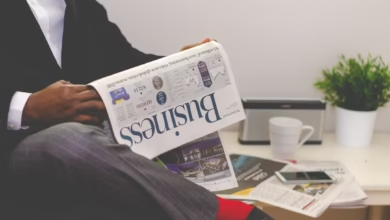Understanding the Causes of Inflation: Key Factors and Strategies for Navigating Economic Trends

Inflation is a complex economic phenomenon that affects individuals, businesses, and countries alike. Understanding the causes of inflation is crucial for navigating the financial landscape, especially in today's volatile market. This article delves into the primary types of inflation, including demand-pull, cost-push, and monetary influences, to provide a comprehensive overview of how these factors contribute to rising prices. With global inflation trends becoming increasingly unpredictable, many are concerned about the impact of inflation on the cost of living, which encompasses wage inflation, energy prices, and food prices. Furthermore, we will explore how inflation metrics like the Consumer Price Index (CPI) and Producer Price Index (PPI) inform our understanding of economic conditions. As central banks adjust interest rates and implement monetary and fiscal policy measures to manage inflation expectations, we aim to equip you with strategies for inflation-proof investments and effective inflation hedging. Join us as we navigate the intricate web of inflation, its causes, and the implications for economic growth and personal financial planning.
- 1. Understanding the Causes of Inflation: Demand-Pull, Cost-Push, and Monetary Influences
- 2. The Impact of Inflation on the Cost of Living: Analyzing Wage Inflation and Price Metrics
- 3. Navigating Inflation Trends: Strategies for Inflation-Proof Investments and Economic Growth
1. Understanding the Causes of Inflation: Demand-Pull, Cost-Push, and Monetary Influences
Inflation is a complex economic phenomenon influenced by various factors that shape the cost of living and the purchasing power of money. Understanding the causes of inflation is essential for both policymakers and consumers. The primary types of inflation include demand-pull, cost-push, and monetary influences, each contributing differently to inflationary pressures.
Demand-pull inflation occurs when the demand for goods and services exceeds their supply, pushing prices higher. This often arises during periods of economic growth when consumers and businesses are willing to spend more, leading to increased competition for available products. Factors like rising wages, consumer confidence, and low-interest rates can exacerbate this situation. When inflation expectations rise, consumers may rush to make purchases, further fueling demand-pull inflation.
On the other hand, cost-push inflation is driven by rising production costs, which can stem from various sources, including supply chain disruptions, energy prices, and food prices. For instance, if the cost of raw materials increases due to geopolitical tensions or natural disasters, businesses may pass these costs onto consumers, resulting in higher prices. Additionally, wage inflation can contribute to cost-push inflation as employers raise salaries to attract talent in a competitive labor market.
Monetary influences also play a significant role in inflation dynamics. Central banks utilize monetary policy to manage inflation by adjusting interest rates and controlling money supply. When interest rates are low, borrowing becomes cheaper, which can stimulate spending and investment, potentially leading to increased inflation. Conversely, tightening monetary policy by raising interest rates can help curb inflation but may also slow economic growth.
In recent years, global inflation trends have revealed the interconnectedness of economies, where local inflation can be impacted by international factors such as currency devaluation or fluctuations in commodity prices. For example, if a country's currency loses value, imports become more expensive, contributing to inflation.
Understanding these underlying causes not only helps in formulating effective inflation strategies but also assists individuals in making informed decisions about inflation-proof investments and retirement savings. By keeping a close eye on inflation metrics like the Consumer Price Index (CPI) and Producer Price Index (PPI), individuals can better anticipate changes in the economy and adjust their financial plans accordingly.
In summary, the causes of inflation are multi-faceted, encompassing demand-pull, cost-push, and monetary influences. By recognizing the interplay between these factors, we can gain insights into historical inflation patterns and current inflation trends, ultimately leading to more effective financial planning and policymaking.
2. The Impact of Inflation on the Cost of Living: Analyzing Wage Inflation and Price Metrics
Inflation significantly impacts the cost of living, influencing everything from daily expenses to long-term financial planning. Understanding the relationship between inflation and wage inflation is crucial for individuals and policymakers alike. As inflation rises, the purchasing power of consumers is eroded, leading to heightened concern over living costs. Wage inflation, which refers to the increase in wages, often struggles to keep pace with rising prices, resulting in a decline in real income for many households.
To analyze the effects of inflation on the cost of living, we must consider key inflation metrics such as the Consumer Price Index (CPI) and Producer Price Index (PPI). The CPI measures the average change over time in the prices paid by consumers for a basket of goods and services, while the PPI focuses on the average change in prices received by domestic producers. These metrics highlight how inflation affects various sectors, including energy prices and food prices, which are particularly sensitive to shifts in supply chain disruptions and global inflation trends.
As inflation expectations rise, central banks may adjust monetary policy to counteract the effects of inflation. This could involve increasing interest rates to curb spending and borrowing, ultimately impacting economic growth. Conversely, during periods of stagflation—where inflation and stagnant economic growth coexist—policymakers face significant challenges.
Additionally, inflation has implications for retirement savings and investments. As inflation erodes purchasing power, individuals increasingly seek inflation-proof investments to safeguard their assets. Real estate inflation has emerged as a popular hedge against rising prices, while digital currencies and other inflation hedging strategies are gaining traction among investors looking to mitigate risks associated with currency devaluation.
Understanding the dynamics between inflation, wage inflation, and the cost of living is vital for navigating today’s economic landscape. Adapting to inflation trends demands awareness of both fiscal policy and individual financial strategies to ensure long-term stability and growth.
3. Navigating Inflation Trends: Strategies for Inflation-Proof Investments and Economic Growth
Navigating inflation trends requires a proactive approach, especially as we witness varying types of inflation, including demand-pull, cost-push, and monetary inflation. Understanding these causes of inflation can help investors and policymakers devise effective strategies to mitigate its effects on the economy and individual financial well-being.
One of the primary strategies for inflation-proof investments is to diversify portfolios. This includes investing in real assets such as real estate, which historically has shown resilience against inflation, often referred to as real estate inflation. Additionally, commodities like gold and silver can serve as effective inflation hedging tools, protecting against currency devaluation and rising energy prices. Investors may also consider incorporating inflation-linked bonds or treasury inflation-protected securities (TIPS) into their portfolios, which adjust interest payments based on inflation metrics like the Consumer Price Index (CPI) and Producer Price Index (PPI).
Another critical approach is to focus on sectors that traditionally perform well during inflationary periods. Companies in the energy and food sectors, for instance, often maintain strong pricing power due to increased costs and supply chain disruptions. As inflation expectations rise, these sectors can provide a buffer against the cost of living increases that consumers face.
For those concerned about wage inflation impacting their retirement savings or overall financial health, adopting a fiscal policy that prioritizes savings can be beneficial. This includes setting aside funds in high-yield savings accounts or investing in digital currencies, which are gaining traction as alternative assets in the face of inflation.
Central banks play a vital role in managing inflation trends through monetary policy. By adjusting interest rates, they can influence borrowing costs and consumer spending, which in turn affects inflation rates. Understanding these dynamics can help individuals and businesses not only prepare for potential stagflation—a situation characterized by stagnant economic growth and high inflation—but also seize opportunities for economic growth during periods of disinflation.
In summary, navigating the complexities of inflation trends involves a combination of strategic investment choices, awareness of global inflation trends, and an understanding of the broader economic landscape. By employing these inflation strategies, individuals can better protect their financial futures against the pervasive effects of inflation.
In conclusion, understanding the causes of inflation is essential for individuals and policymakers alike. By examining the types of inflation—demand-pull, cost-push, and monetary influences—we can gain insight into how various factors, including energy prices, food prices, and supply chain disruptions, contribute to rising costs of living. The impact of inflation is felt across all sectors, leading to wage inflation and affecting inflation metrics such as the Consumer Price Index (CPI) and Producer Price Index (PPI).
As we navigate current global inflation trends, it's crucial to adopt effective inflation strategies, including inflation-proof investments and inflation hedging, to safeguard retirement savings and maintain economic growth. Additionally, understanding the role of monetary policy and fiscal policy in managing inflation expectations can help mitigate the risks associated with hyperinflation and stagflation.
By staying informed about historical inflation patterns and emerging trends, such as the influence of digital currencies and shifts in interest rates, we can better prepare for future economic fluctuations. Ultimately, being proactive in recognizing and responding to inflation's causes will empower individuals and communities to thrive amid the challenges posed by inflation and debt, ensuring financial stability for years to come.





